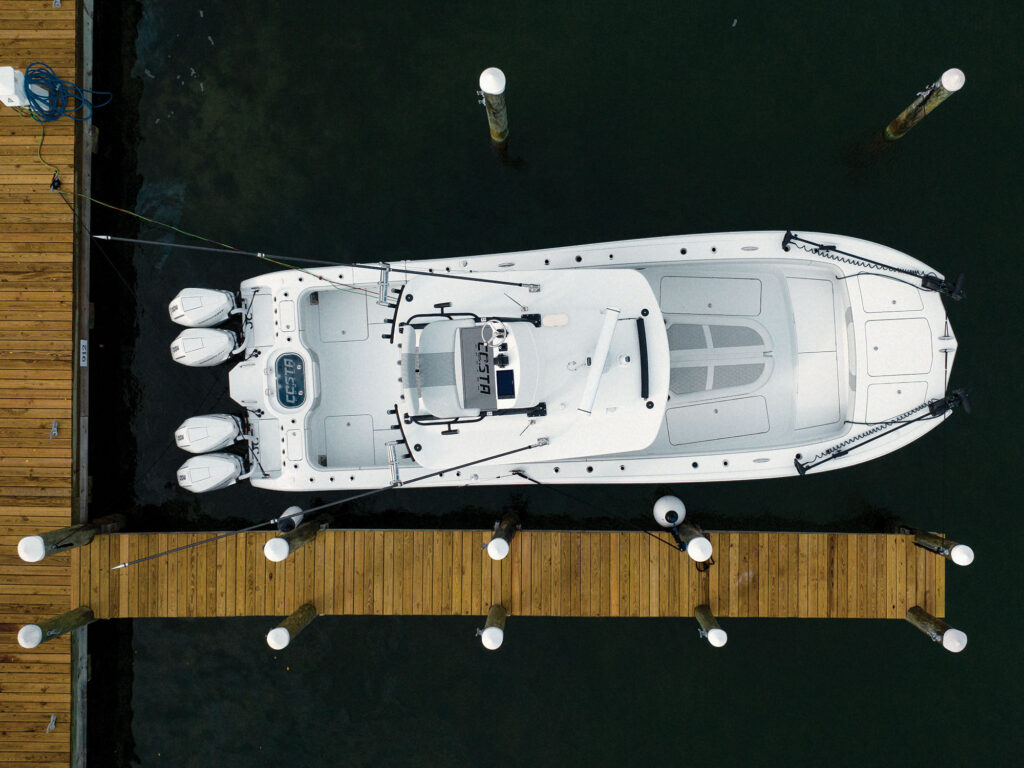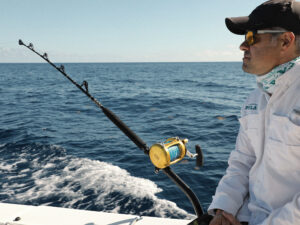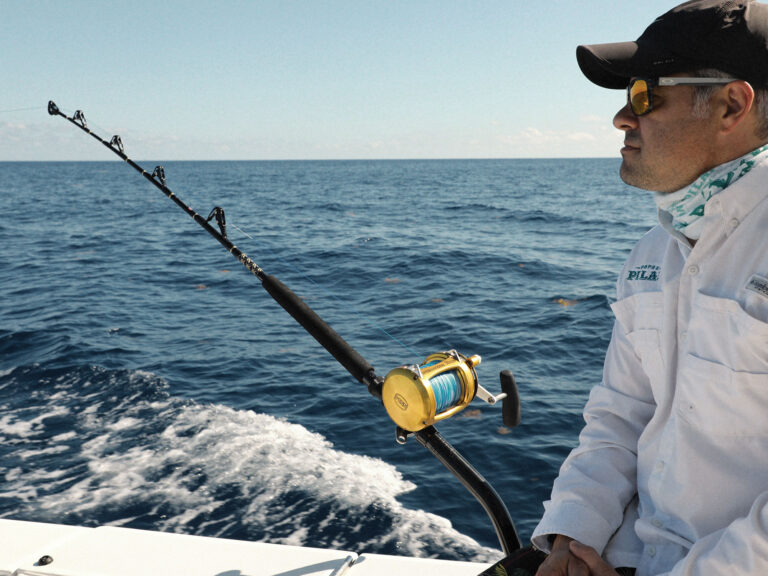
Much of the docking done by boating anglers takes place on face docks against which the boat must be pulled side-to, often between two other boats, such as at a fuel dock, a marina bait and tackle shop, or waterfront restaurants. Here are four tips to help docking at face docks in challenging conditions.
1. Docking in a Strong Current
We’ve all been there. You’re heading to a popular waterfront restaurant with little room between boats at the dock and plenty of people dining on the patio watching your every move. Even worse, there’s a ripping current to add to the degree of difficulty. When faced with this scenario, nearly all recreational boaters point the bow into the current because it feels more natural, but this tactic can cause several problems. First, if driving a boat with a raised bow, and there’s no help at the dock, lassoing the cleat with the bow line can be difficult. If a captain is solo, it can be downright comical. Then if the captain tries to ease up to the dock and shifts the engine to neutral for more than a few seconds, the bow can get caught by the flow, and the boat will tend to spin sideways. Add wind and it gets complicated.
– INVEST TO IMPRESS –
Safety Tip Provided by the U.S. Coast Guard
A boating course is a great way to gain confidence and boat-handling skills. A little practice now will make it look easy when everyone is watching.
Aborting a docking attempt when heading into the current after things go wrong can be difficult. If the captain turns away from the dock and goes forward, the stern swings toward the dock (or another boat). Reversing down-current reduces control and puts the bow at risk of a collision. Inexperienced boaters sometimes panic and add a blast of power, which nearly always makes a bad situation worse.
An old saying goes, “Let the wind be your friend,” and it also applies to current. The trick is to go stern-first into the tidal flow. Now the part of the boat that controls power and direction leads the way, giving you maximum control, and the bow will always follow the stern. The first step is to match the boat’s speed to the current and try to bring the boat to a stop, well away from the dock. Then gently turn the props toward the dock and the boat will slowly move sideways. Use gentle power inputs or reductions to adjust the boat’s position relative to the desired space, keeping in mind the flow’s intensity will decrease when the boat gets close to the dock and ducks into the lee of the up-current boat.
The beauty of this maneuver is that when you get close to the dock, the engine’s thrust keeps the boat pinned to it. And because the stern is the lowest part of a boat, it’s easy to cleat the stern line without hopping off, even if the captain is alone. Once the stern line is on, the boat isn’t going anywhere, and you can jump on the dock with the bow line in hand and finish tying off. Pull this off smoothly, and you might get applause from onlookers.
2. Docking Into the Wind
When the wind is blowing toward a dock, it’s easy. Just pull up parallel to the dock a few feet away, shift into neutral, and let the wind blow your boat in. But it’s trickier when a strong wind is trying to repel your boat from a dock, especially if there’s little room between boats docked there. The simplest and safest way to dock is to have a bow line ready and motor gently straight toward the dock. Then when the boat’s bow is at the dock, have a friend hop off with line in hand and toss it to someone at the dock. Or if the captain is solo, use a boat hook to place the bow line on a cleat close to where you want the bow to be positioned. Leave at least 4 or 5 feet of slack in the line if you have a centerline bow cleat and a couple of feet if it’s a side cleat. Then go to the helm, put the engine in reverse, and turn the prop toward the dock, and the stern will walk in gently.
– LOWER YOUR RATES –
Safety Tip Provided by the U.S. Coast Guard
Taking a boating safety course won’t just make you a better skipper. It could also help you save big on insurance.
3. Swing Docking
This maneuver requires a lot of practice but is a fast and efficient way to approach a face dock with limited space. I discovered this method out of necessity. When I lived in a rental house on a canal in the Florida Keys, the property owner had a 31-foot lobster boat and rented dockage to a 50-foot sport-fishing boat, leaving precisely 26 feet of space in between for my 24-foot Stamas. I found I could idle my boat straight at the dock, favoring the left side of my space, and then as I got close, I would spin the wheel hard to starboard to its stops and shift into neutral just after the boat started turning. Because the turn was so hard, the boat’s momentum continued toward the dock, drifting sideways before gently kissing it. Every boat is different, so the timing and aiming point are variable. Before trying to squeeze between a Hinckley Picnic Boat and an Intrepid, practice this maneuver a hundred times or so with no obstructions. When you can pull it off, it looks pretty cool and scares the bejabbers out of those on the dock, which is a bonus.
Read Next: Spring Line Docking
4. Departing Against the Wind
Most boaters use the heroic-shove method to extricate their boat when the wind pins it to a dock. But often, they don’t generate enough power to get it far enough away—especially if the captain shifts into forward gear and turns the wheel hard. Like the scenario in maneuver one, trying to pull forward in this situation causes the stern to swing toward the dock, which can result in the sound of splintering fiberglass. A safer way to accomplish this maneuver is to free all dock lines except the one on the bow, which should be secured by a couple of wraps around the cleat instead of the usual hitch, and the bitter or loose end held tight by a helper on the dock or a person on board. Then the driver should spin the wheel hard toward the dock and shift into forward, which gently powers the stern outward. When the stern is far from the dock, undo the wraps, pull the line on board, shift into reverse, and back the boat away safely.
– CHECK THE WEATHER –
Safety Tip Provided by the U.S. Coast Guard
The weather changes all the time. Always check the forecast and prepare for the worst case.
When docking in tight situations, the key is to remain calm, have plenty of fenders deployed and one handy for fending off, and resist the temptation to add a lot of throttle. If a boat moves slowly, it can be fended off without hurting people or property. And heed the advice in The Hitchhiker’s Guide to the Universe book series: “Don’t panic!”









